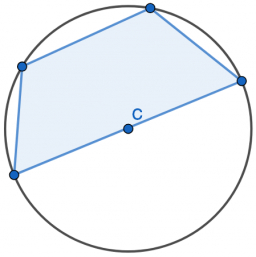Polygon 3
Polygon ABCD is dilated, rotated, and translated to form polygon QWER. The endpoints A and B are at (0, -7) and (8, 8), and the endpoints QW are at (6, -6) and (2, 1.5). What is the scale factor of the dilation?
Final Answer:

Tips for related online calculators
Check out our ratio calculator.
Do you want to convert length units?
See also our right triangle calculator.
Do you want to convert length units?
See also our right triangle calculator.
You need to know the following knowledge to solve this word math problem:
geometryarithmeticplanimetricsbasic operations and conceptsUnits of physical quantitiesGrade of the word problem
Related math problems and questions:
- Scale factor
 A prism with a volume of 1458 mm³ is scaled down to a volume of 16 mm³. What is the scale factor in fraction form?
A prism with a volume of 1458 mm³ is scaled down to a volume of 16 mm³. What is the scale factor in fraction form? - The coordinates
 The coordinates (5, 2) and (-6, 2) are vertices of a hexagon. Explain how to find the length of the segment formed by these endpoints. How long is the segment?
The coordinates (5, 2) and (-6, 2) are vertices of a hexagon. Explain how to find the length of the segment formed by these endpoints. How long is the segment? - Figure 2
 Figure A maps to figure B with a scale factor of 0.75. The length of the line AB segment in figure A is 10. What is its length on the image in figure B?
Figure A maps to figure B with a scale factor of 0.75. The length of the line AB segment in figure A is 10. What is its length on the image in figure B? - Divide line segment
 Find the point P on line segment AB, such that |AP| = r |AB|. Coordinates of endpoints: A = (−2, 0, 1), B = (10, 8, 5), ratio r = 1/4.
Find the point P on line segment AB, such that |AP| = r |AB|. Coordinates of endpoints: A = (−2, 0, 1), B = (10, 8, 5), ratio r = 1/4. - General line equations
 In all examples, write the GENERAL EQUATION OF a line that is given in some way. A) the line is given parametrically: x = - 4 + 2p, y = 2 - 3p B) the slope form gives the line: y = 3x - 1 C) the line is given by two points: A [3; -3], B [-5; 2] D) the lin
In all examples, write the GENERAL EQUATION OF a line that is given in some way. A) the line is given parametrically: x = - 4 + 2p, y = 2 - 3p B) the slope form gives the line: y = 3x - 1 C) the line is given by two points: A [3; -3], B [-5; 2] D) the lin - A cube
 A cube has a surface area of 64 ft². Henrietta creates a reduction of this cube using a scale factor of 0.5. What is the surface area of the reduction?
A cube has a surface area of 64 ft². Henrietta creates a reduction of this cube using a scale factor of 0.5. What is the surface area of the reduction? - The pond
 We can see the pond at an angle of 65°37'. Its endpoints are 155 m and 177 m away from the observer. What is the width of the pond?
We can see the pond at an angle of 65°37'. Its endpoints are 155 m and 177 m away from the observer. What is the width of the pond?
